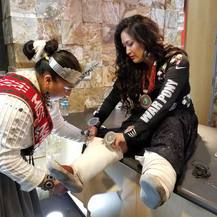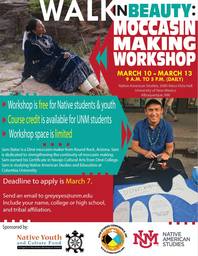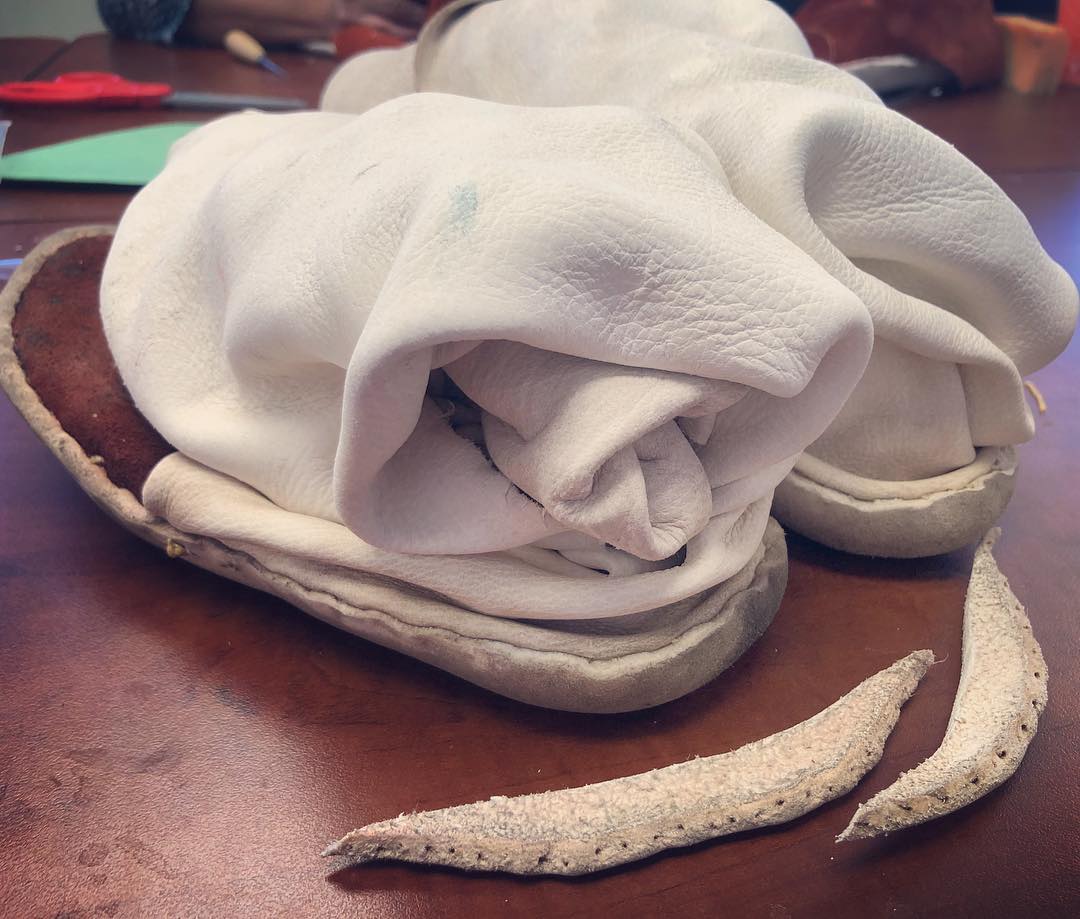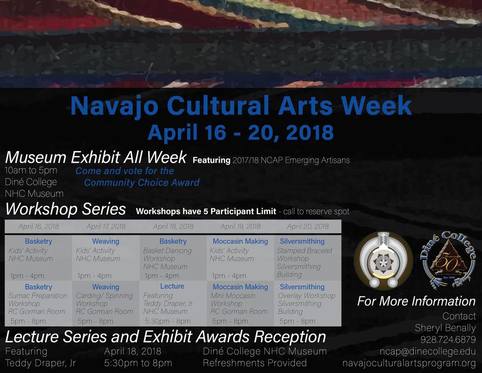Crystal Littleben Miss Navajo 2017-2018, Office of Miss Navajo Nation
workshop as well! My moccasins were an inch too long due to wear and tear (probably from the rainy and muddy days) and the wrappings were hanging by a tread! With help from former NCAPer and awesome workshop leader, Sam, the repair (surgery) was successful! I cut half an inch off the sole and restitched the back half. The stitching naturally came back to me and it was like I never stopped making moccasins. This experience helped to jump start my critical thinking about the holistic components of moccasin making - so that's what I have for you today!
crucial so that your moccasins seems don't have scalloped, wavy edges. This spacing is created through your diligent perception. So take time to rest your eyes. It pays of in the end. Your posture is also something that you have to pay attention to. Much like weaving, if your posture is poor, that laziness reflects in your work and back pain. Now mind you, this is just with the assemblage process. If you hunt, butcher and tan for your own buckskin - that's going to add a whole list of other physical demands as well.
Sam Slater also explained this connection between identity and moccasin making rather pointedly after the UNM workshop: "My identity as an individual is so tied to this art, it was such a humbling experience to teach it once again. Over four days of sharing and living moccasin stories, I know each of these participants all have their own moccasin story to tell, a story they stitched themselves". In short, as my yáázh Wilson Aronilth says, if you do not know who you are, you can never truly be happy. Knowing you are a moccasin maker for cultural artisans like Sam brings happiness and grounding in our Diné cultural identity.
of critical consciousness for your students, but often feel you’re missing the tools. These sacred shoes of survival are those tools. That’s all I have to say now, that these kélchí and their beautiful makers are such powerful tools for our people. I’m grateful for all they continue to teach me." In my opinion - becoming a moccasin maker is like getting your Ph.D. is Critical Theory and Application.
those who are no longer with us. It is in this way that moccasin making comfortably connects Sam and I. My aunt was known for making moccasins with a unique double stitch. Sam found out about this stitch from his NCAC Moccasin Instructor, Harry Walters, and started to experiment on his own. The double stitch calms the scallops of the sole and as Sam worked on mastering this stitch, in a way he smoothed my soul, pushing memories of my bizhi to the forefront. It must be a Round Rock thing! Thank you to NAS UNM and Sam for inviting me! Keep up the great work! And to our blog readers - if you want to give moccasin making a try - NCAP is hosting a mini moc workshop hosted by Aaron Begay, along with other cultural arts emphasis workshops during the 2018 Navajo Cultural Arts Week. Contact Christine or Sheryl to reserve your spot - They fill up quickly. Next week's blog is by Johnnie on the holistic components of weaving --- so stay tuned!!
0 Comments
Leave a Reply. |
Categories
All
Archives
October 2021
|
SocialsALL PHOTOS IMAGES ARE COPYRIGHT PROTECTED. PHOTO IMAGES USE IS SUBJECT TO PERMISSION BY THE NAVAJO CULTURAL ARTS PROGRAM. NO FORM OF REPRODUCTION IS PERMITTED WITHOUT WRITTEN PERMISSION FROM THE NAVAJO CULTURAL ARTS PROGRAM. |
Featured Pages |





